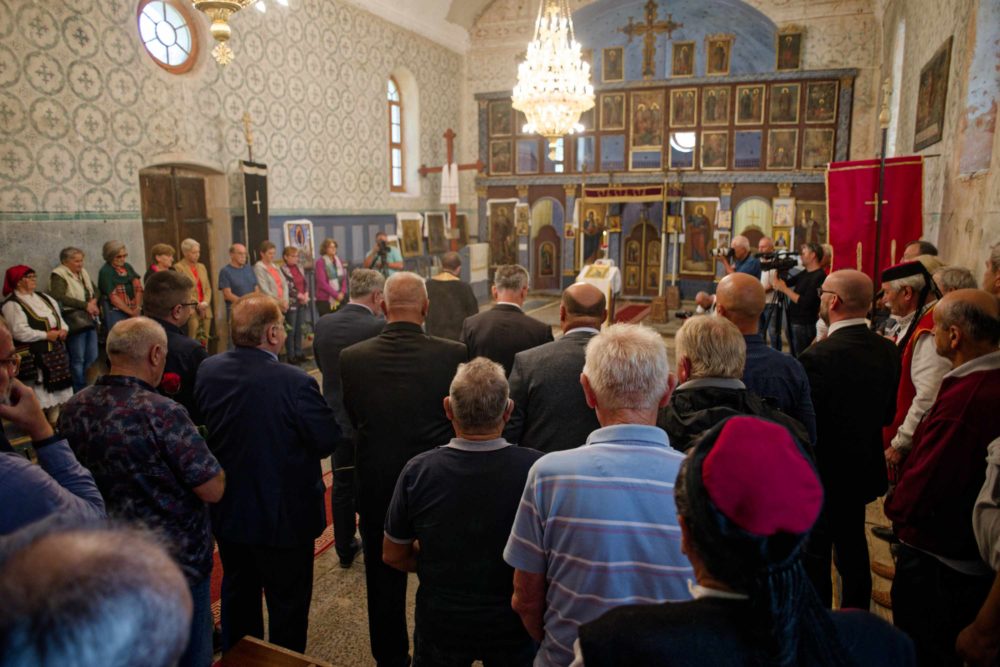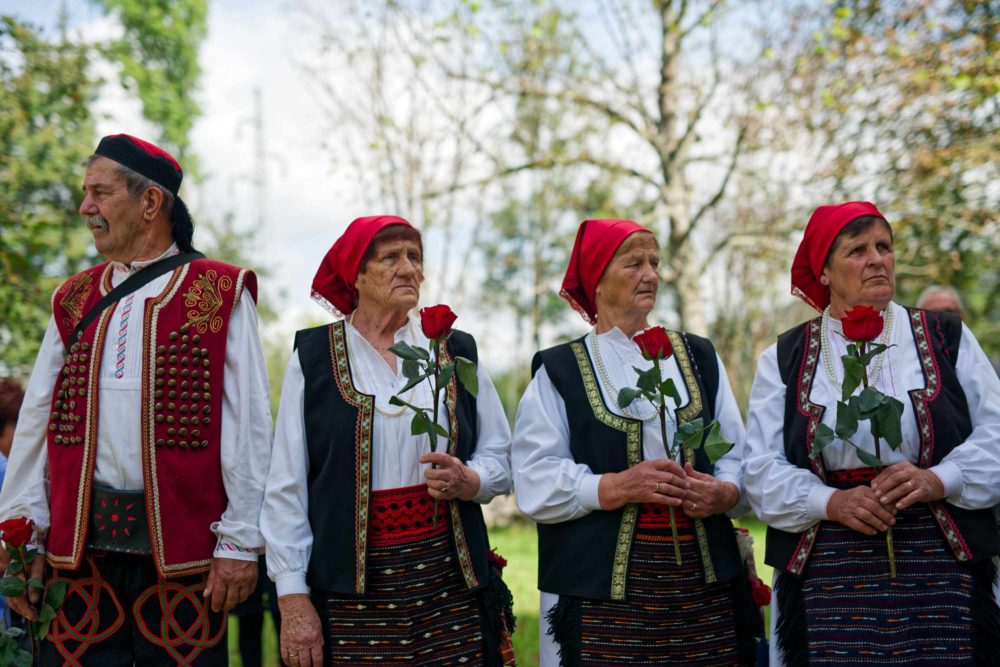To mark 30 years since the killing of civilians during Operation Medak Pocket, the Youth Initiative for Human Rights and the Serb National Council in Croatia organised a study trip titled “The Young Remember the Forgotten”. We from the Centre for Nonviolent Action Sarajevo-Belgrade joined the study trip. The Croatian Army’s military operation called “Pocket ‘93” began on 9 September and lasted until 17 September 1993. War crimes against the civilian population and prisoners of war were committed during the operation, and all buildings in the area were destroyed.
During the three-day study trip, Tihomir Ponoš, a reporter and historian, as well as the executive editor of Novosti, spoke about what happened in the Medak Pocket 30 years ago, and later the participants met with Milan Uzelac, deputy prefect of the Lika-Senj County.
We visited Gospić, Divoselo, Počitelj and Medak, and the few people still living in the villages. We had a video-call with Dragan Pjevač whose mother Boja Pjevač was one of 88 people killed in the Medak Pocket.
The commemoration for the victims was held at the portal of the Church of St. John the Baptist in Medak.
Everything mined, everything razed
The town of Gospić, the largest populated place in the area, had an ethnically mixed population before the war, consisting of 64% Croats and 30% Serbs. Today, its population is 94% Croat and 3.5% Serb. The total population has been reduced by a factor of three to less than 10,000 (there used to be 30,000 inhabitants), so it is easy to calculate the number of Serbs left in the entire territory: around 350. “No,” the locals tell us, “there’s not even 250 Serbs living here.”
It is most lushly green with vegetation where houses once stood, says Milan Uzelac, the vice prefect of the Lika-Senj County, as he points out the barely visible remnants of houses sprouting trees while we walk around Divoselo.
The place can be found on the map, but if you reach it by the road being overtaken by grass on all sides, edged with signs warning of minefields, you’ll have a hard time believing you are in a village. Everything is green, apart from the road passing through this lush patch of wilderness.
Divoselo, which according to the 1991 census had a population of 344, is now inhabited only by the Stanić couple, who reconstructed their house, and only during the summer. All the structures in the village, not just the houses, but auxiliary buildings, barns, garages, everything was blown up or razed to the ground during Operation Medak Pocket, so that apart from the vegetation and animals, there is no other life in the village.
A military operation without any wounded or captured
The situation is similar in Medak itself, where a memorial service and commemoration for the victims was held at the church, although there are now 37 people living there, including four children. Mirko Zagorac was a refugee for a long time, but he returned, asked for his house to be reconstructed and now he lives there. The population of Počitelj used to be 367, and now it’s two. Čitluk in Lika also went down from 129 to two inhabitants.
Mirko tells us about how after Operation Storm, he travelled for 14 days to reach Belgrade. In Medak itself, the church remained undamaged.
Fifty shells fell around the Church of St. John the Baptist, but the church itself remained whole, no one knows how, Mirko tells us.
There were no wounded or captured in this operation of the Croatian Army – 88 people were killed, of which 26 were older than 60 and 17 were women. Another 11 are still counted as missing, of which seven were over 70 and four were women.
Boja Pjevač
My brother Nikola found our mother Boja Pjevač 18 days later in Počitelj. She had three fingers missing from one hand… we are told by Dragan Pjevač, who was himself the president of the Coordination of Serb Associations of Families of Missing, Killed and Dead.
Convictions for crimes in the Medak Pocket do exist,[1] and though they may not be just, they are final. However, members of Boja Pjevač’s family, her son Dragan tells us, have had their claim for reparations rejected. His appeals have been rejected twice by the Croatian Constitutional Court, while the European Court of Human Rights is of the opinion that not all legal remedies have been exhausted in Croatia. The courts take issue with the fact that the perpetrator has not been identified, or convicted, though the case itself is still under investigation. Boja was killed and her children never received reparations, instead they have to pay high legal fees to the same state whose military commanders have at least to some extent been convicted for crimes in the Medak Pocket.
PJEVAČ BOJA
The climb is level
stones flying downhill.
The valley was once of two eyes
that watched games of stone throw,
the waist centring the choreography of the fair.
The climb is level
through the woods that gently
laid down human traces,
populated chimneys with nocturnal animals and
small birds.
The climb is level
no one complains,
or tarries in the snow,
no one leads in the mowing,
no one’s pupils spread in fear beneath the leaves.
Aneta Vladimirov
[1] Mirko Norac (commander of the 9th Guard Brigade of the Croatian Army) was convicted for these crimes and sentenced to seven years in prison, during which time he got married, built a house and completed university studies. Another three members of the Croatian Army were also convicted. Rahim Ademi (commander of the Gospić military area) was acquitted, while Janko Bobetko (chief of the Main Staff of the Croatian Army), indicted before the ICTY, died before trial.

